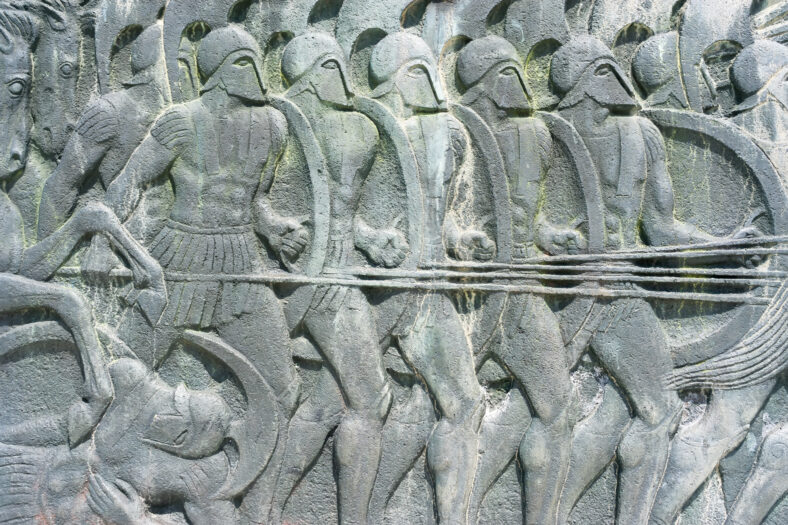Want To Buy A 2,500-Year-Old Helmet That Belonged To An Ancient Greek Warrior?

If you want to buy a rare 2,500-year-old helmet that belonged to an ancient Greek warrior, this very artifact is heading to the auction block, where it is expected to sell for roughly $111,000.
It was made between 500 and 450 B.C.E. and is one of the most well-preserved specimens to become available on the market in recent years.
The bronze artifact is called a Corinthian helmet. According to Apollo Art Auctions, which is selling the item, it features “almond-shaped eye holes, large cheek-pieces, and a wide nose guard.” It also contains rows of tiny holes that were used to attach helmet liners with small metal fasteners.
Experts suggest that the narrow eye holes in Corinthian helmets limited the peripheral vision of the wearer. However, that may not have mattered because the warriors would have stood close together with their weapons facing forward.
The Corinthian style is named after Corinth, an ancient Greek city-state located about 50 miles west of Athens. Around the 8th century B.C.E., Corinth became a commercial hub due to its coastal location, abundance of natural resources, and fertile soil.
Over time, Corinth and Athens developed a rivalry. They competed for political power and mercantile dominance, fueling conflict in the region.
In the following centuries, Corinth declined and was eventually destroyed in 146 B.C.E. by the Roman general Lucius Mummius.
A century later, Julius Caesar established Corinth as a Roman colony, which is why so many Roman ruins are found there today. For example, the ruins of the Temple of Apollo, built around 550 B.C.E., are still standing.
The city was famous for its warfare, but it is unclear whether the Corinthian helmet style was developed in the area. Similar helmets have been worn by ancient warriors from many Greek city-states.

Sign up for Chip Chick’s newsletter and get stories like this delivered to your inbox.
Some later versions of Corinthian helmets contained holes for the ears on each side so the warriors could hear better. The helmet being sold does not have any ear holes.
The helmet going up for auction may be linked to a Spartan warrior. It is a prime example of the artistry and craftsmanship of ancient Greece.
On January 25, the helmet will be sold among nearly 500 other items. It is expected to be the most expensive item in the auction’s catalog.
The helmet belonged to a hoplite, which is a kind of ancient Greek foot soldier who wore heavy armor to protect themselves.
Hoplites primarily carried spears and large, round shields. They were the very image of ancient Greek soldiers that we think of today.
The pieces of armor were often lined with cushioning material to absorb impact during combat. Usually, the helmets that belonged to members of the elite were decorated with colorful paint, elaborate patterns, and horsehair crests.
You can check out the listing here.
More About:News